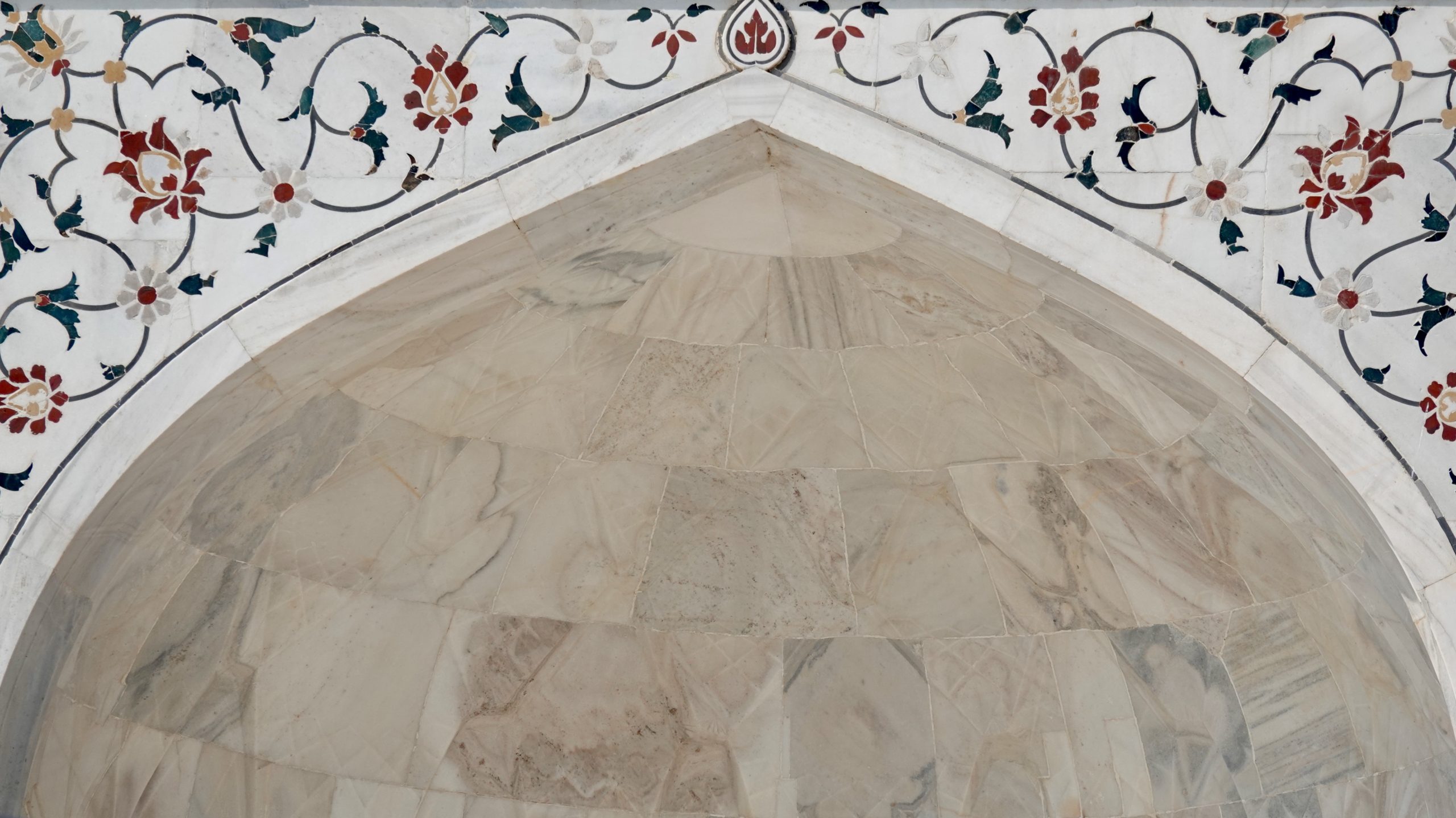…with suitably sublime music.
With some things, it is their “novelty value” which excites and/or delights us.
For the too-easily-bored, “novel” things are the only things that excite them.
If you are not one of the too-easily-bored, there are many things which “never wear out”; they continue to delight us, however many times we see, and/or hear, and/or taste them.
A few moments ago, I allowed myself 60 seconds to jot down some examples.
That little exercise yielded this fragment of what – given more time – would be an enormously longer list:
WA’s wild orchids, kangaroos, elephants, Chopin, Two People’s Bay, black cockatoos, moonrise, mountains, Riesling, King George Whiting, the oud…..
A longer list would, of course, include the Taj Mahal.
I took this post’s image in February this year, when my beloved and I visited the Taj a third time.
One of our companions had been there circa fifty times; he was also nowhere near yet “over” the Taj.
Click here to discover how the Taj’s extraordinary floral decorations were achieved, how many floral species they depict, and what the decorations signify.
(in my photo, you are looking at precious or semi-precious stones, inlaid in the Taj’s white marble exterior)
India itself certainly belongs on my list of, “no matter how many times…”
So does this sublime musical ode to India:
Shakti was originally a quartet, formed in 1974. A Handful of Beauty was their second album, recorded and released in 1976.
Shakti and its various “Remember Shakti” sequels have oft been misunderstood and wrongly described, simply because so many Westerners know only the name and fame of the highly-intermittent but long-running project’s only non-Indian member.
Oft labelled as “World Music” or “East-West Fusion” or “Indo-Jazz Fusion”, Shakti was not primarily any of those things.
Yes, its English member had won fame as an exponent of “jazz-rock fusion”, but Shakti’s primary “fusion” had nothing to do with jazz-rock, and Shakti’s crucial “fusion” was not “East meets West”.
By 1974 “East” had already met “West” on a great many stages, and in umpteen recording studios.
However, Shakti was groundbreaking, because its primary “fusion” was “North-South”, in Indian terms.
Any list of the world’s great hand drummers ought include the two you just heard on India – Zakir Hussain and T.H. “Vikku” Vinayakram.
Zakir is primarily a tabla virtuoso, whilst Vikku is a genius of the ghatam.
(the other musician you just heard was Shakti’s original violinist, Lakshminarayana Shankar, or L. Shankar, whose “home” tradition was Carnatic. Shankar and McLaughlin co-authored India)
Tabla are the emblematic hand drums of Hindustani, or North Indian Classical music, whilst the ghatam – essentially, a claypot – belongs to the Carnatic, or South Indian school.
Pre-Shakti, it was almost unheard of for a Hindustani “great” to share a major stage with a Carnatic peer, much less to maintain an enduring, close relationship as frequent collaborator in concerts and recordings.
Now, it is not rare at all, and within erudite Indian musical circles such “North-South dialogue” is no longer widely regarded as merely a “gimmick”, or as somehow “improper”.
Shakti played a key role in bringing on this welcome change, and the project was never really, “famous Westerner, backed by some Indian dudes”.
Any attentive listener – as opposed to any Record Company PR person – could hear that Shakti had no “primary soloist” …and, for Indian audiences, this group’s sole Englishman was not its most famous member.
(the truth is – that however unwilling some were to recognise the fact – India’s two “separate” classical musical traditions had always shared a lot of ancestry, and influenced each other. Similar comments are apropos to many other musics – blues and country, Greek and Turkish, Jewish and Arabic, Spanish and Cuban, Western “classical” and Western “folk”, even so-called “New Music” and so-called “Pop”)
Discover more, via a revealing interview, here.
Lotus Feet is a purely-lyrical John McLaughlin composition which appeared on Shakti’s eponymous debut album.
However, the more sublime (also “live” – in this case, from a 1997 concert) recorded version is on Remember Shakti. Hariprasad Chaurasia played bansuri – a Hindustani bamboo flute:
For the story behind the above, click this.

I’m interested to hear John McLaughlin’s song attached to the post. I haven’t heard about him in years. Also note I’ve changed my email address. Hopefully the change will be automated and stick.